News
Parmigiani Fleurier Cultural Calendars
Parmigiani Fleurier, under the expertise of Michel Parmigiani, has been manufacturing complicated calendars for some time, and their perpetual calendar complications make some of the most fascinating and irresistible timepieces.

Michel Parmigiani
Gregorian Calendar
These days, most of the world subscribes to the Gregorian calendar introduced in 1582 by Pope Gregory XIII that replaced the Julian calendar. This is a solar calendar that includes leap years to keep the average calendar year around 365 days to match the revolution of Earth around the Sun. This calendar was adopted quickly in the West and since then, it has been used all over the world for business and civil purposes.
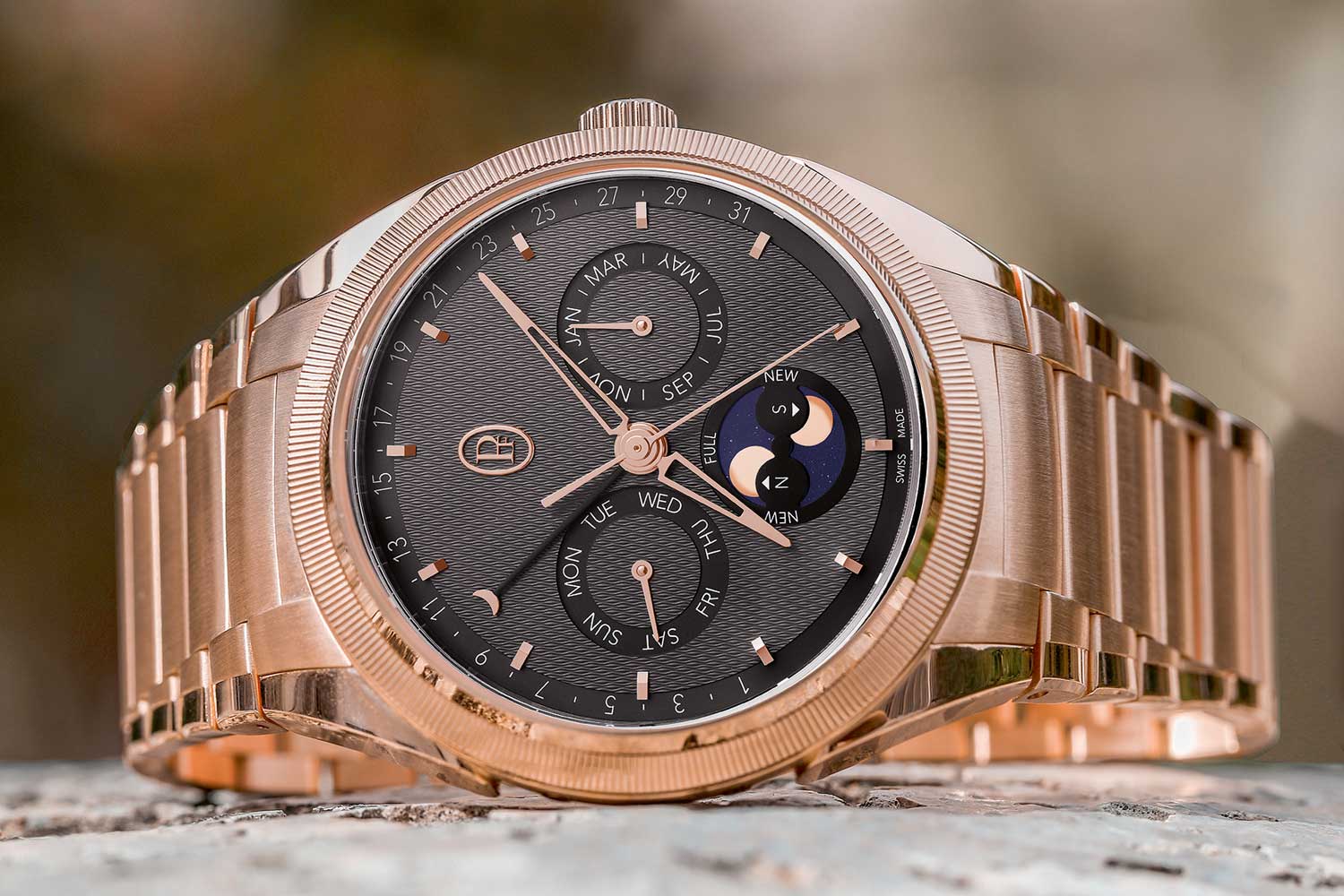
Parmigiani Fleurier Tonda PF Annual Calendar with retrograde date, day, month and 122-year moonphase as visible in both hemispheres
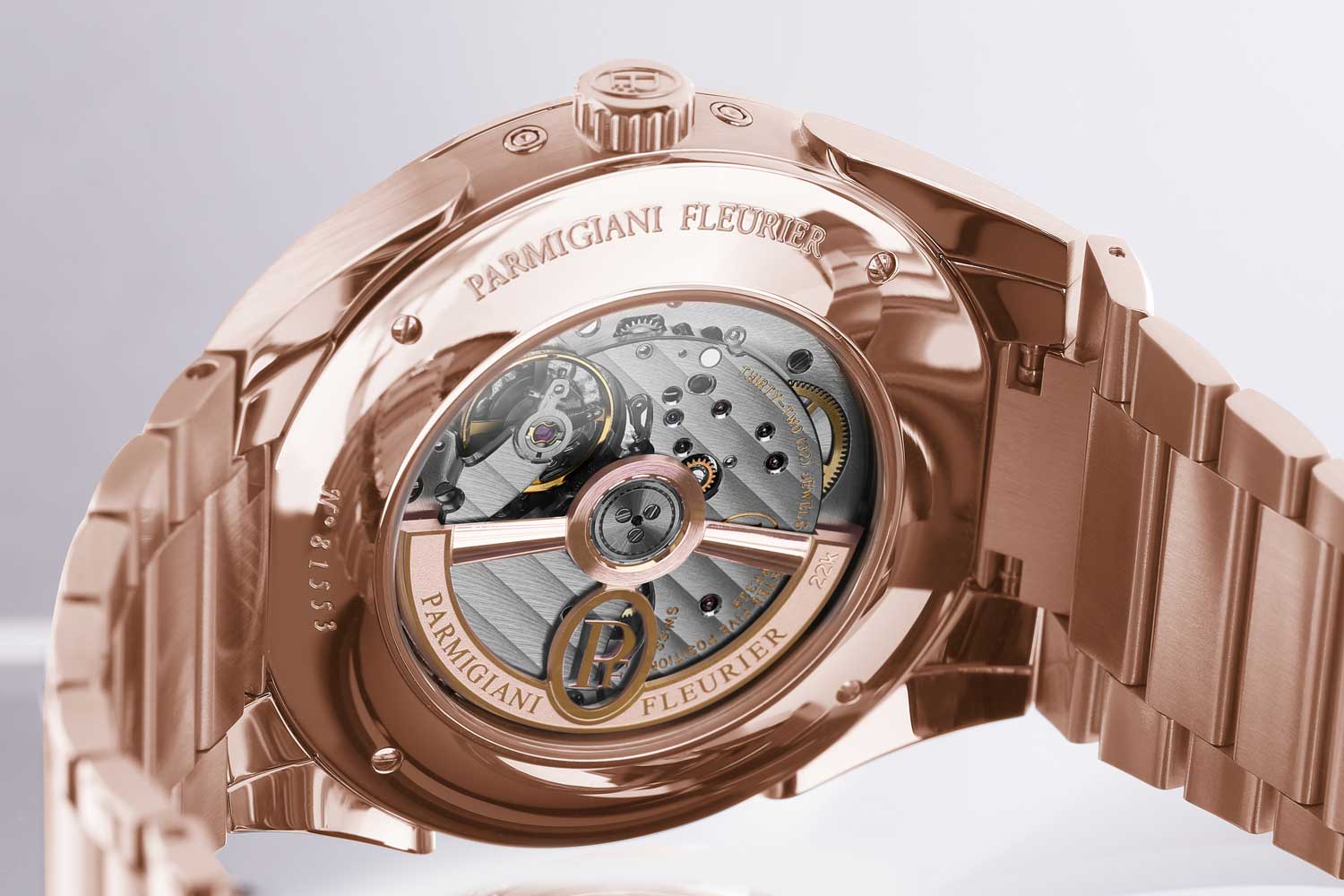
Using the PF331 movement as the base, Parmigiani Fleurier developed the caliber PF339, equipped with an additional module dedicated to the Retrograde Annual Calendar and its precision moon phase
Finished with a coordinating integrated bracelet and the updated Parmigiani Fleurier’s “PF” logo at 12 o’clock, this is a watch that proves its worth in both functionality and form.
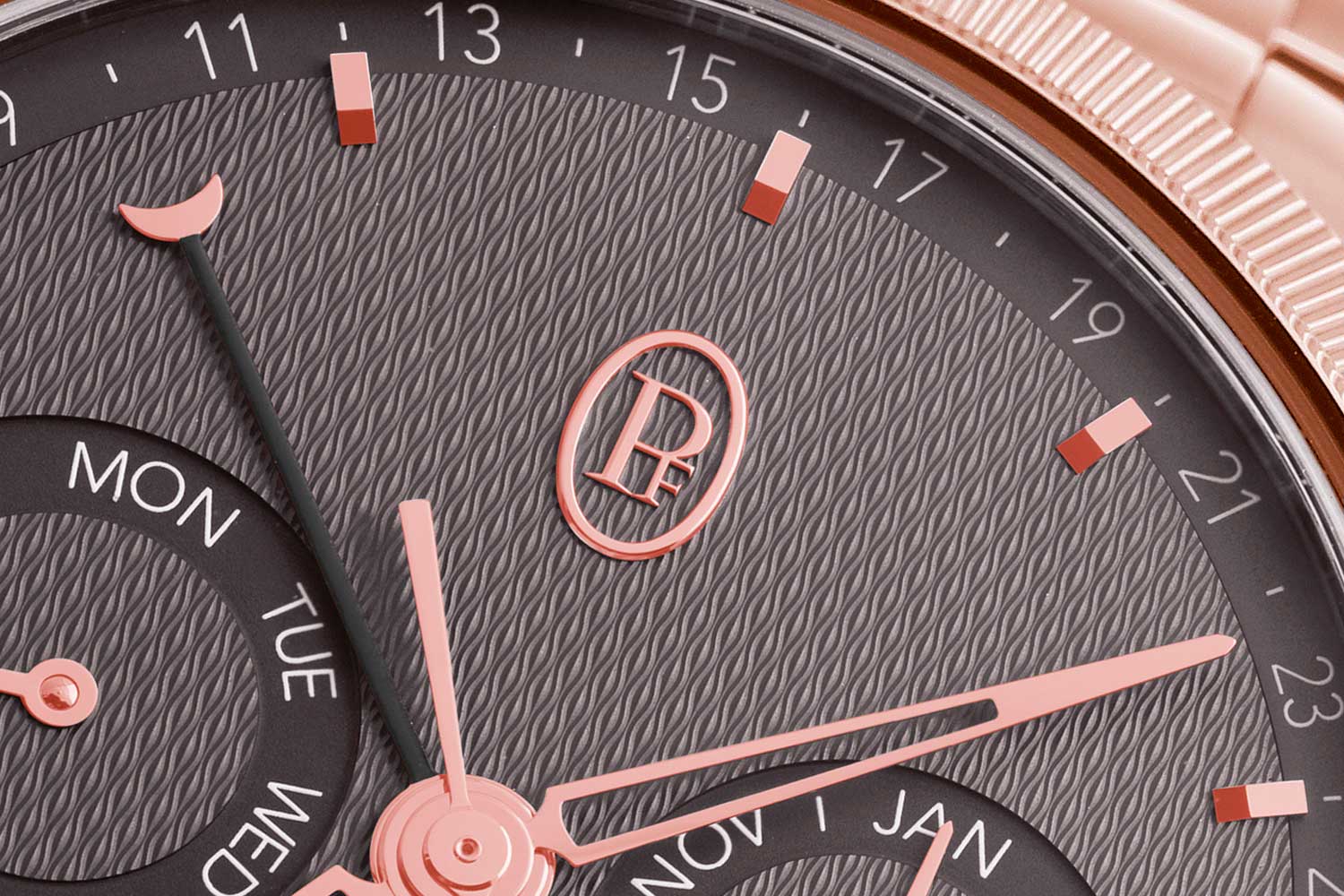
Parmigiani Fleurier’s “PF” logo at 12 o’clock
Hijri Calendar
The Hijri calendar, known in English as the Muslim calendar or Islamic calendar, is a lunar based calendar consisting of 12 lunar months with a year that has 354 or 355 days.. It dates back to 622 C.E. when Muhammad emigrated from Mecca to Medina to establish the first Muslim community. The Hijri calendar has a cycle of 12 months, with the beginning of the month coinciding with the beginning of a new lunar cycle, which results in a 29- or 30-day month.
The Hijri calendar includes a leap day every three years to account for 24 hours lost over time due to the calculations. With this schedule, the months shift through the seasons over time, and because the month is based on the lunar cycle, different communities begin on a variety of days. Due to this complexity, many Muslim countries will observe the Gregorian calendar for commerce and the agricultural season, and the Hijri calendar for religious purposes such as determining holy days, rituals and holidays.
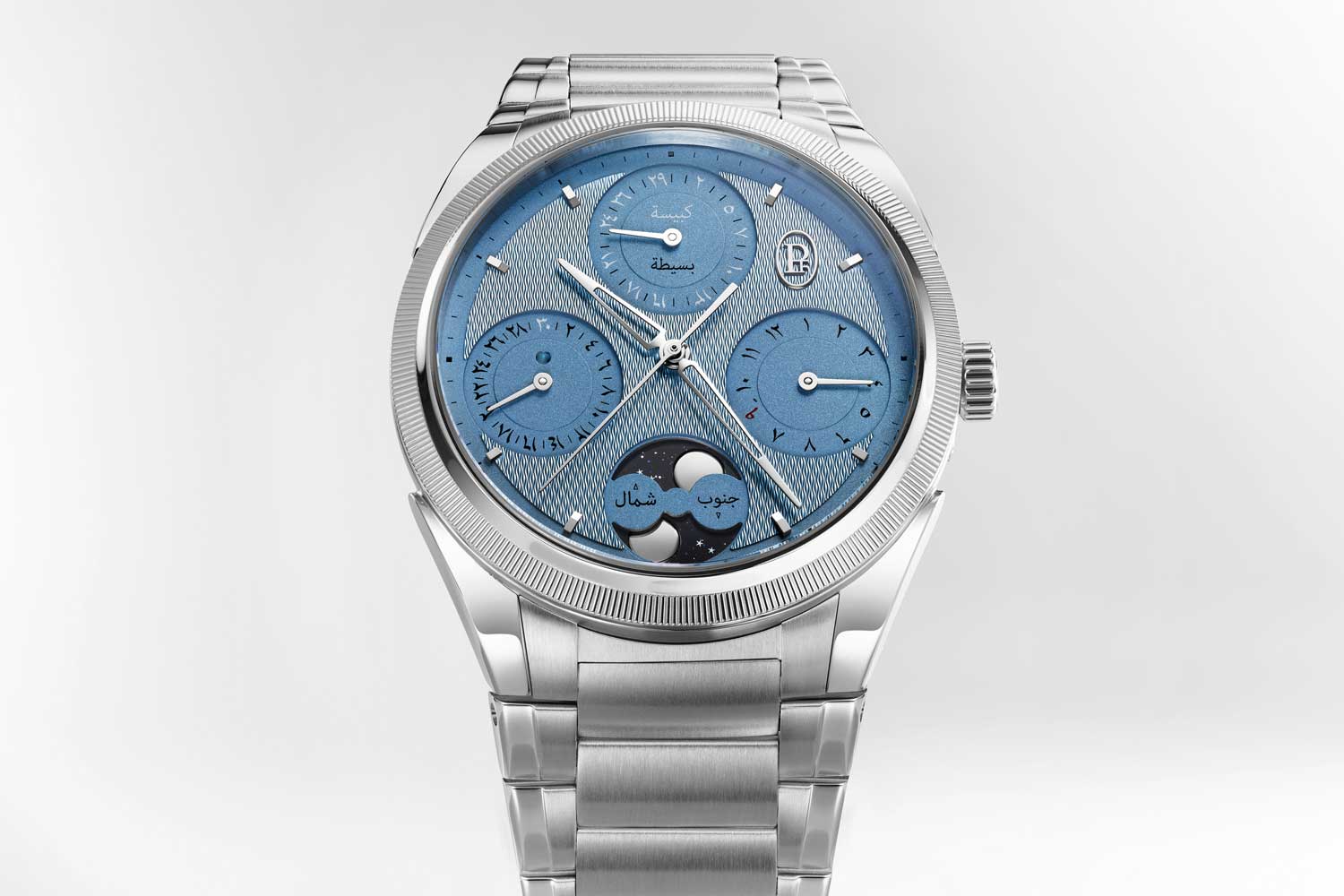
Hijri calendar, known in English as the Muslim calendar or Islamic calendar, is a lunar based calendar. The hours, minutes and dates are indicated in Arabic numerals, while the name and length of the months are marked in Arabic calligraphy
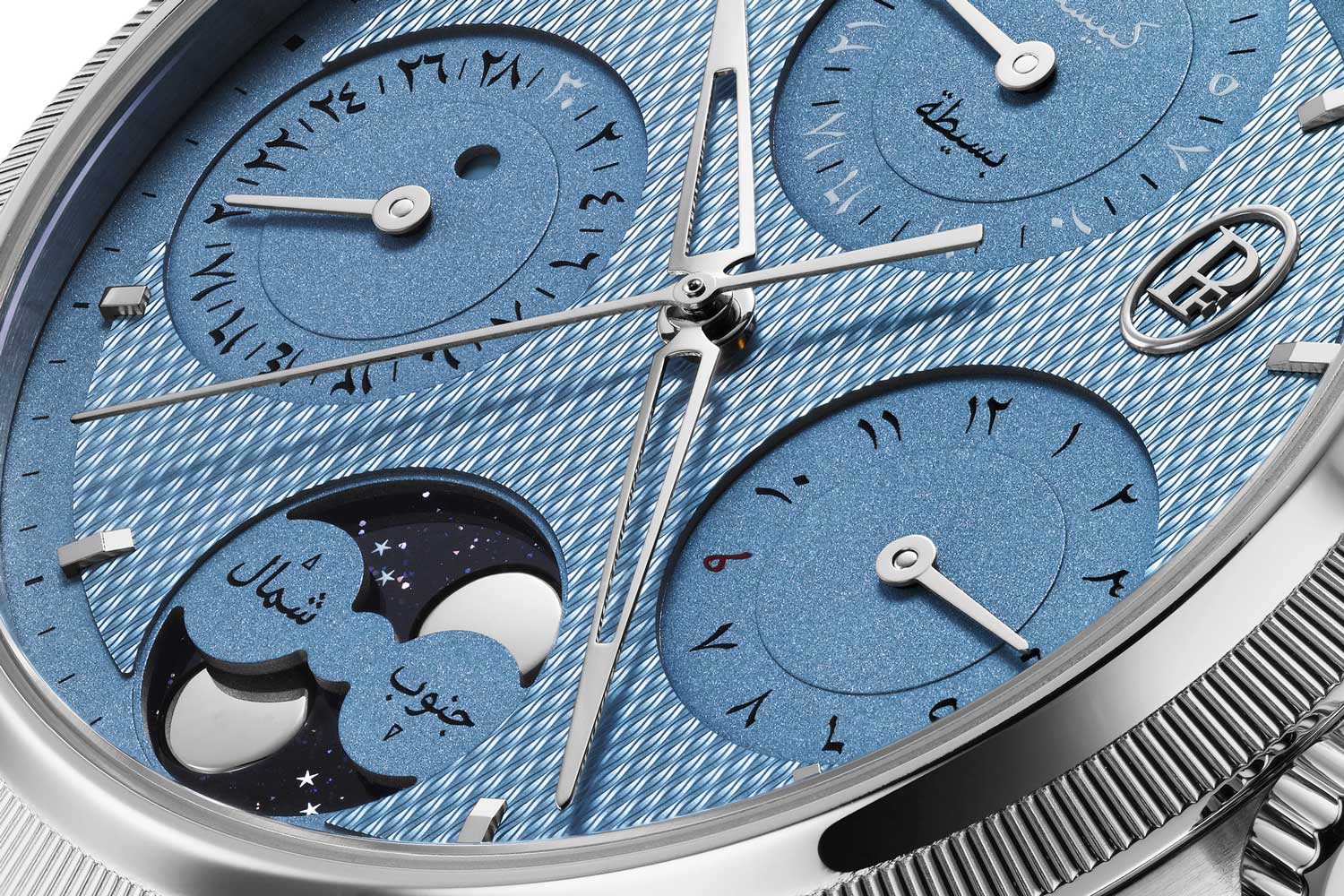
Close up of Hijri Perpetual Calendar's dial
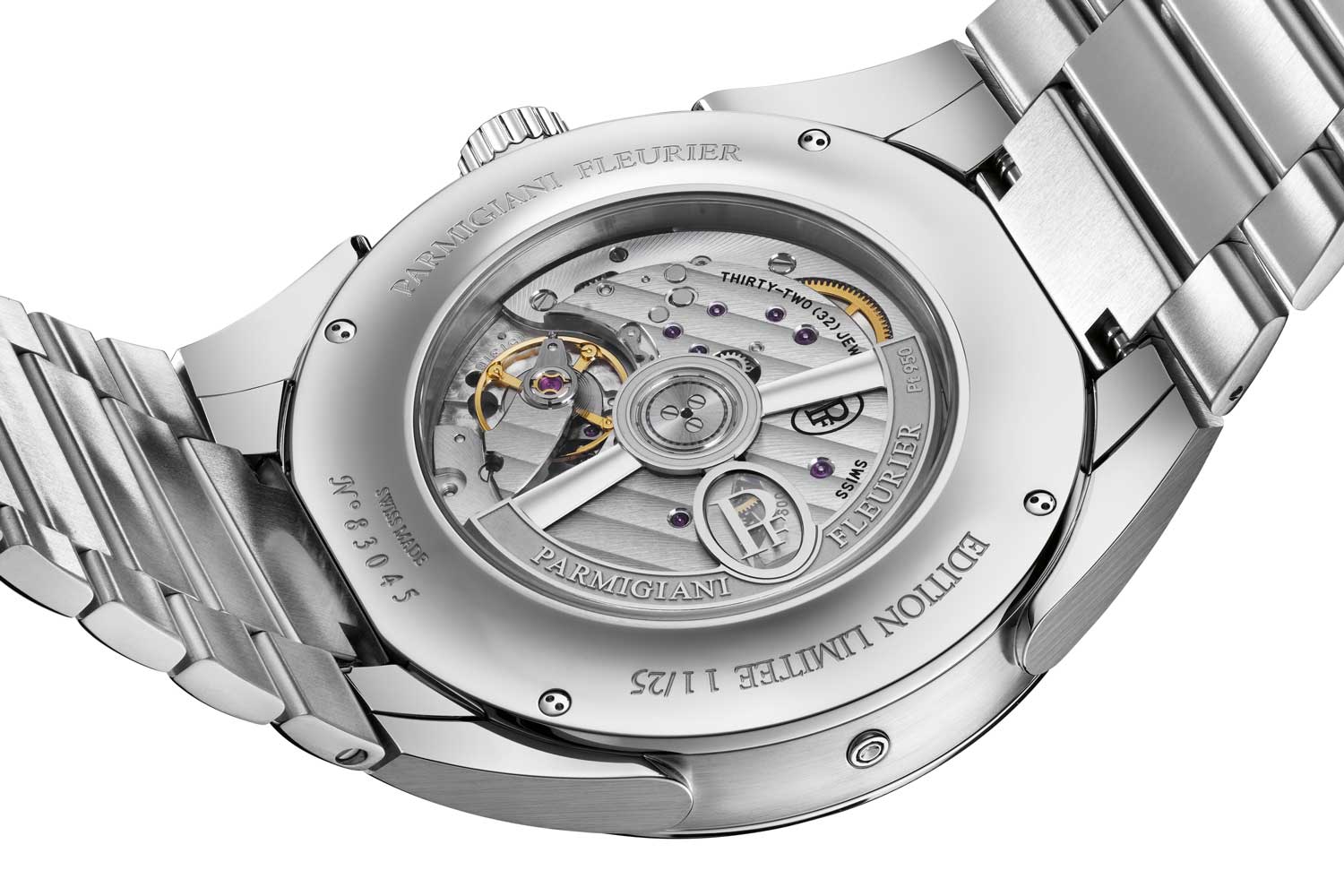
Automatic caliber PF009 features Date, Day, Month, Moon Phase, Perpetual Calendar, Quick Date/Day/Month Correction
Chinese Calendar
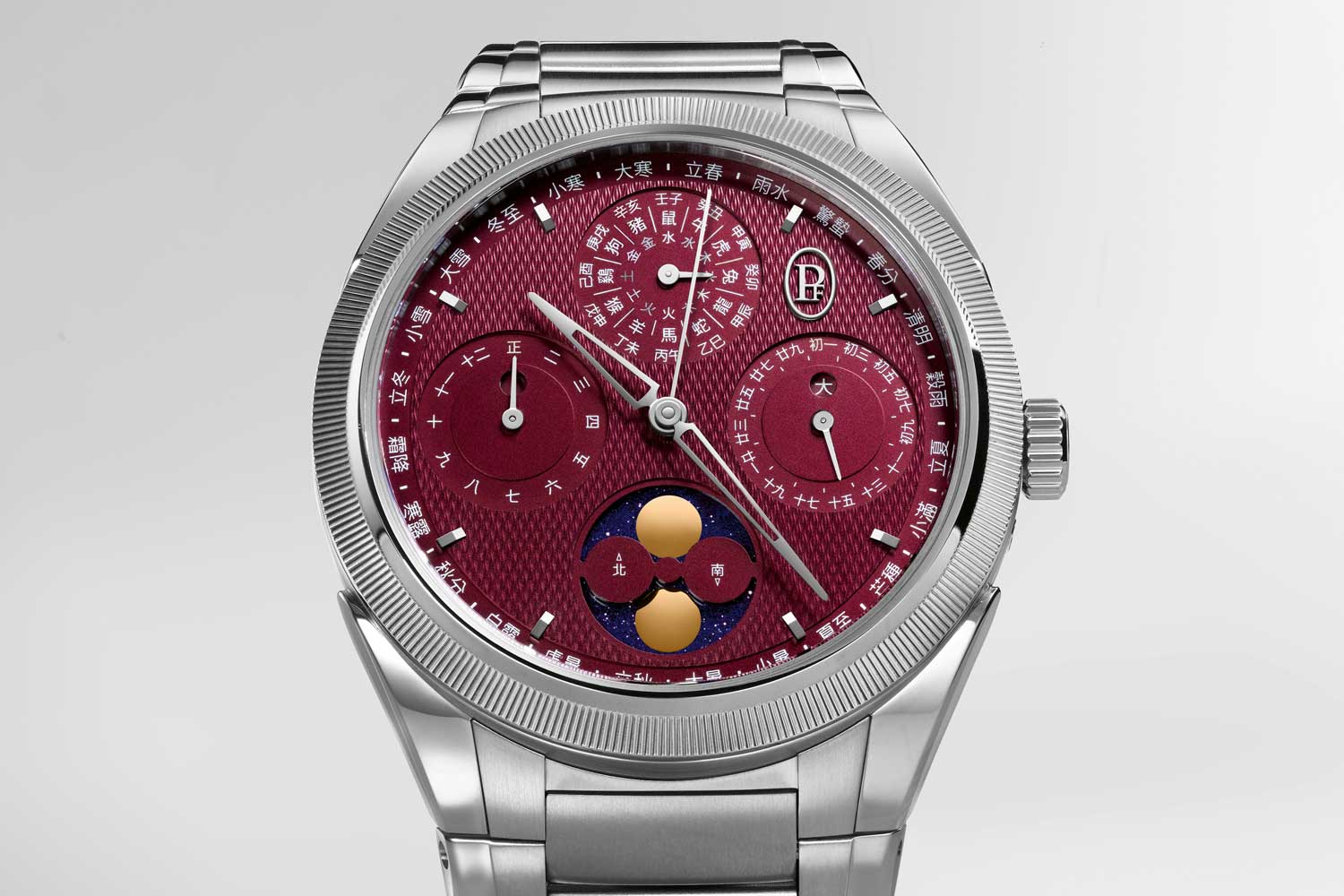
Parmigiani Fleurier Tonda PF Xiali Calendar
The Chinese calendar uses the cycle of the Moon to determine the start of months and years, but solar terms, calculated based on the position of the Sun, are used in the course of each month. There are 24 solar terms in each year and each term corresponds with an astronomical phenomenon, such as the equinoxes or solstices, or a natural phenomenon, such as the awakening of insects or crop growth. Once again, leap months are used to adjust calculations to the course of the Earth around the Sun. There are many variations across Asia and throughout the years, but the contemporary Chinese calendar has been standardized by the Standardization Administration of China in a published national standard in 2017 to create an official calendar.
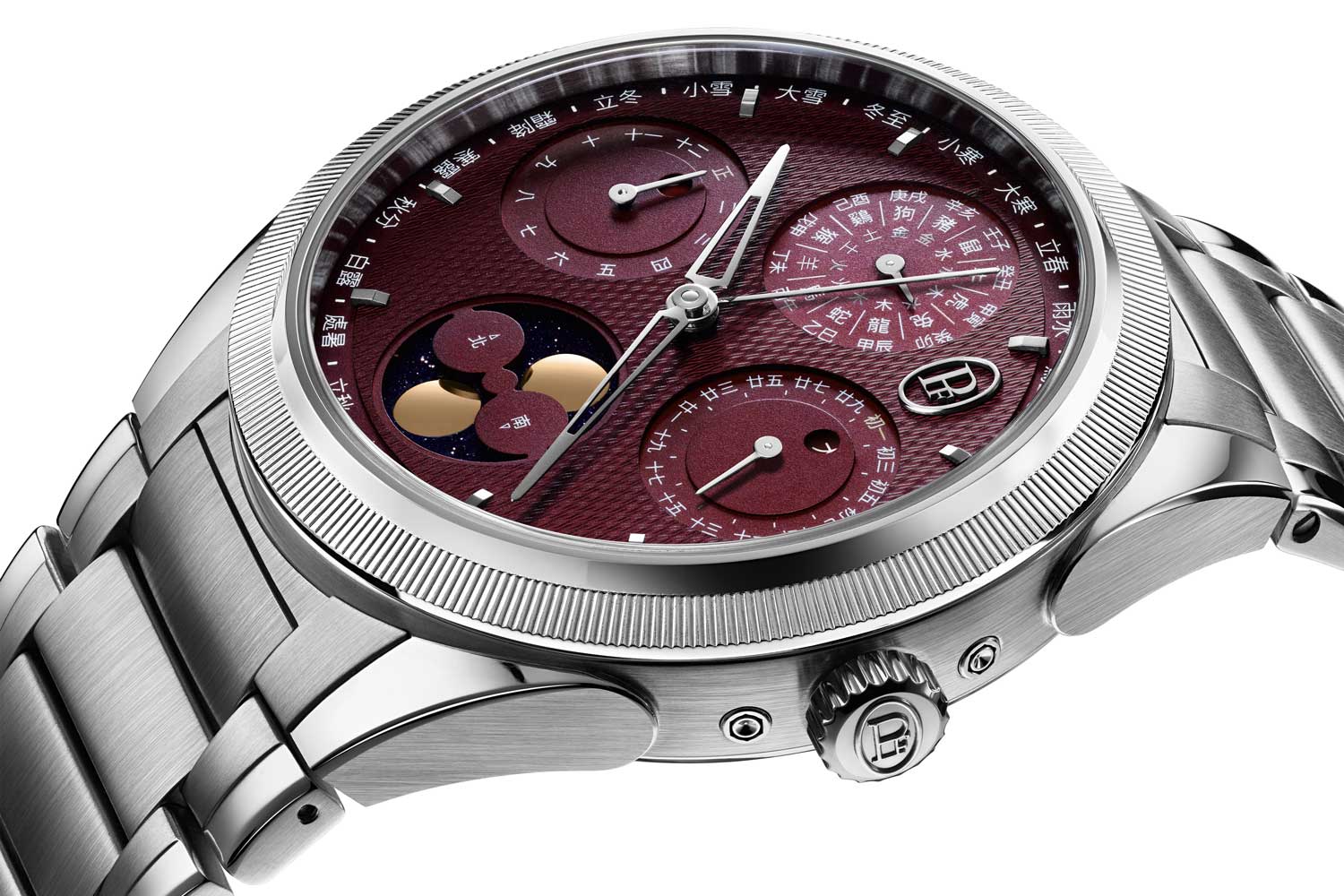
Parmigiani Fleurier Tonda PF Xiali Calendar
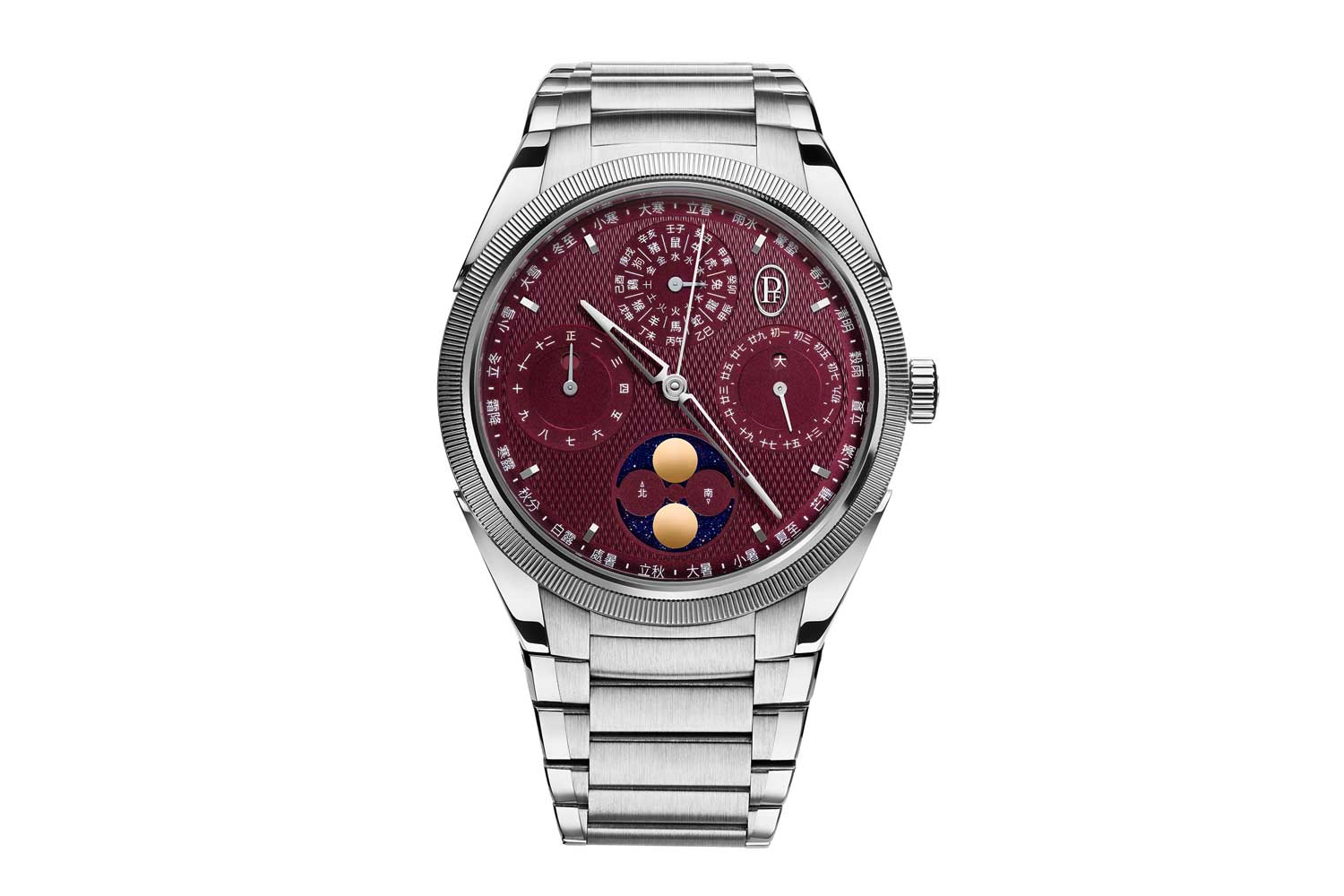
Parmigiani Fleurier Tonda PF Xiali Calendar
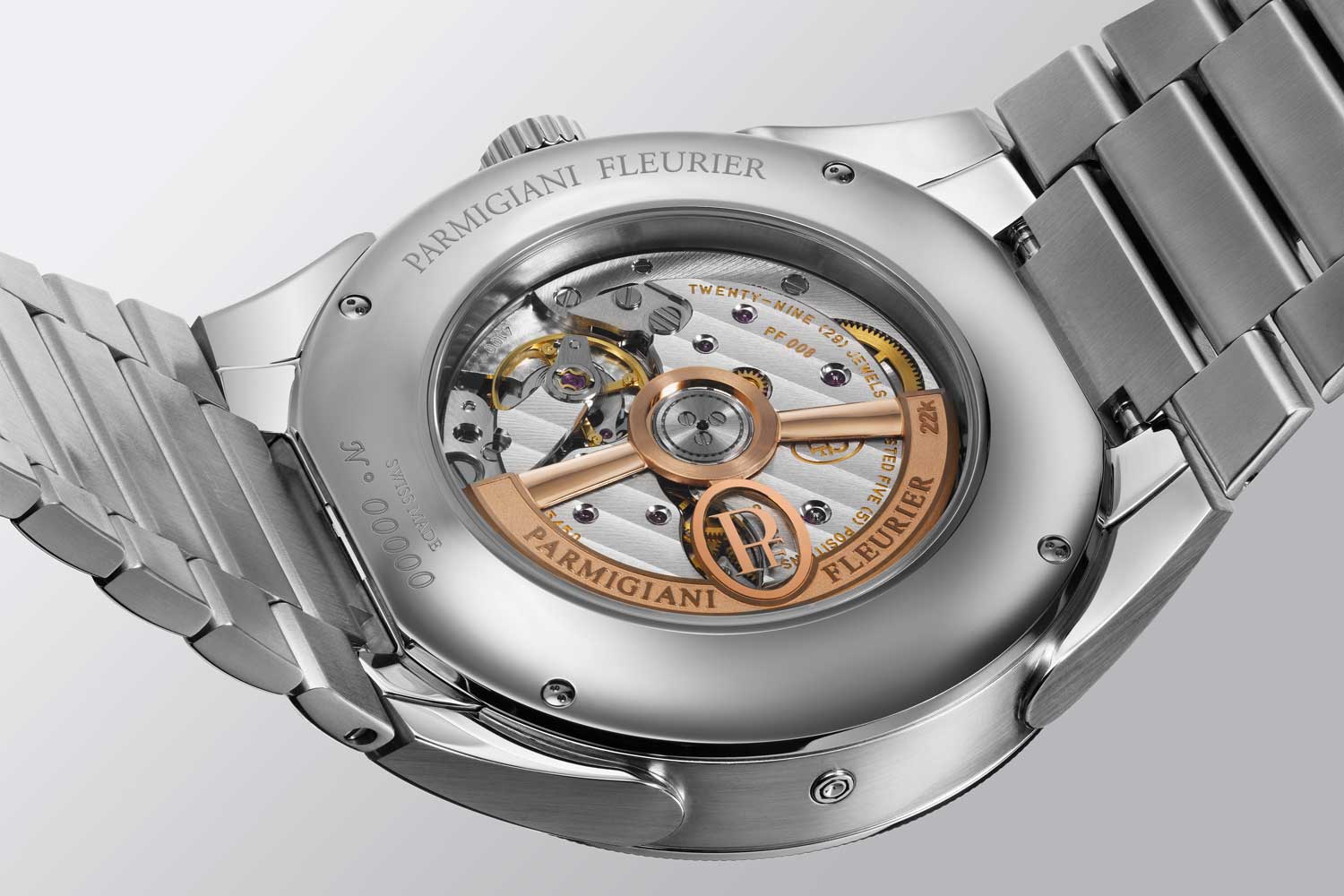
Automatic caliber PF008 feature complex Chinese calendar complication covering a period of 12 years via a cam system
Masters of Time
While calculating the days, months and years is a matter of observation of the Sun and Moon for humans, one can imagine the difficulty of creating a mechanical tool complex enough to manage the job. This is precisely the purpose of the calendar complications used in horology, and it’s no inconsiderable task to undertake to create such a marvel.
“The calendar is an eminently fascinating watchmaking complication, as it really is the mirror of civilization,” says Michel Parmigiani of these complications. Parmigiani Fleurier has not just accomplished the feat in one of these complicated date calculations, but has successfully accomplished a version for each of the Gregorian, Hijri and Chinese calendars. In that sense, the brand’s efforts can be regarded as a true homage to the richness of timekeeping traditions around the world.
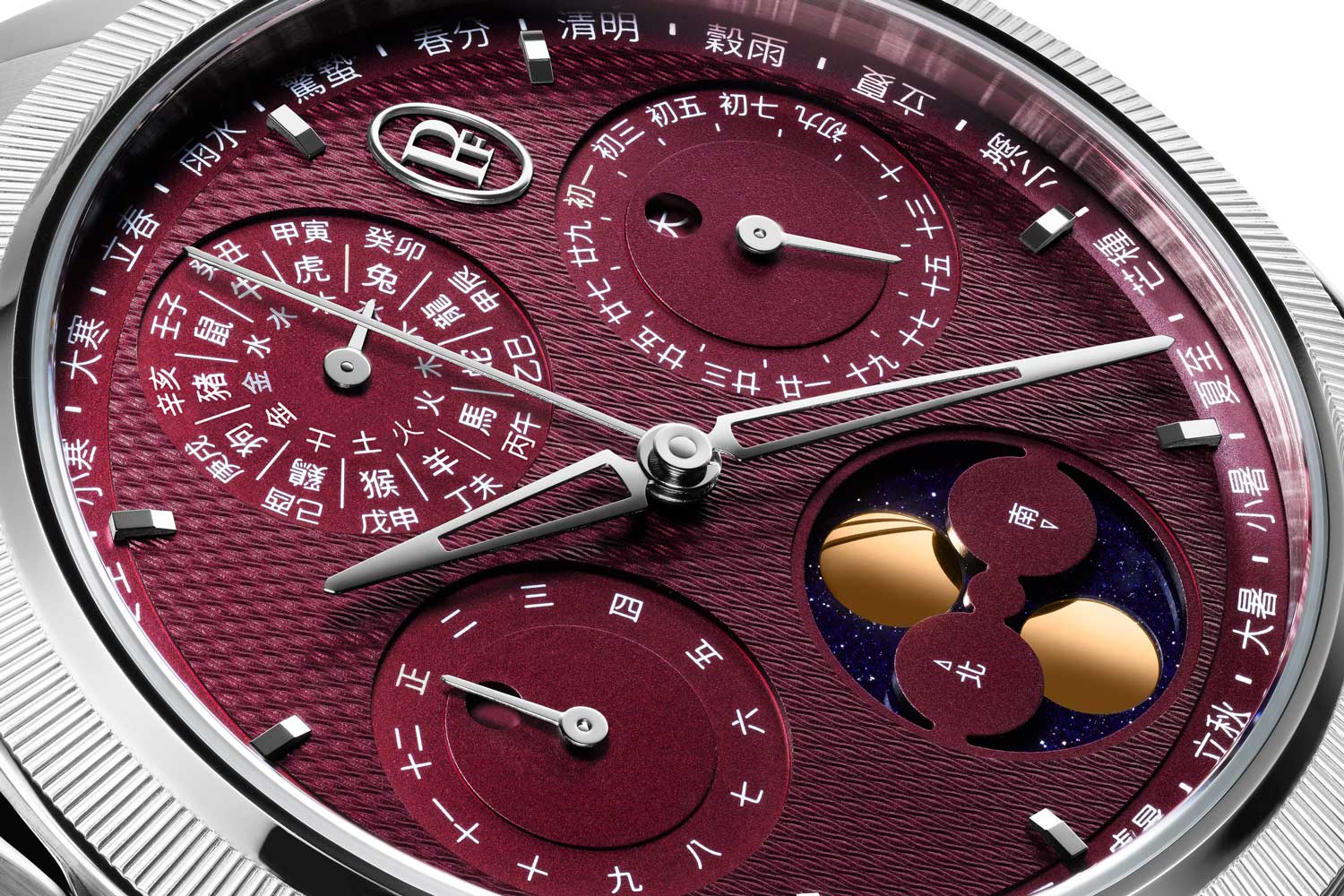
Parmigiani Fleurier Tonda PF Xiali Calendar
Tech Specs
Parmigiani Fleurier Tonda PF Xiali Calendar
Reference: PFH982-1022301-100182
Movement: Self-winding caliber PF008; 54-hour power reserve
Functions: Hours, minutes, and Chinese traditional complete calendar with moonphase
Case: 42mm; stainless steel; water resistant to 100m
Dial: Imperial Red with grain d’orge guilloché; 18K gold rhodium-plated appliques
Strap: Polished and satin-finished stainless steel bracelet
Price: USD 65,300










